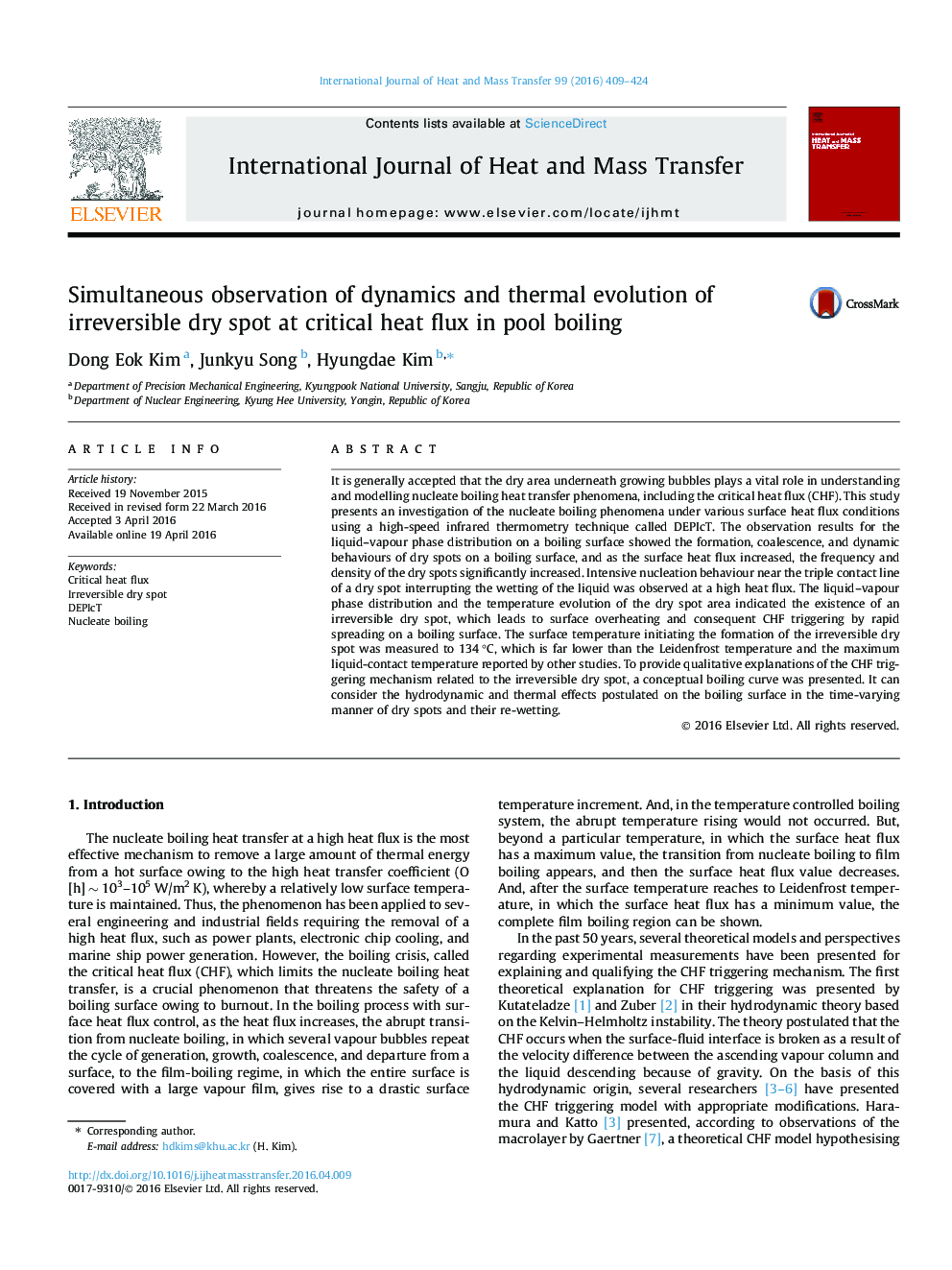| Article ID | Journal | Published Year | Pages | File Type |
|---|---|---|---|---|
| 656464 | International Journal of Heat and Mass Transfer | 2016 | 16 Pages |
Abstract
It is generally accepted that the dry area underneath growing bubbles plays a vital role in understanding and modelling nucleate boiling heat transfer phenomena, including the critical heat flux (CHF). This study presents an investigation of the nucleate boiling phenomena under various surface heat flux conditions using a high-speed infrared thermometry technique called DEPIcT. The observation results for the liquid-vapour phase distribution on a boiling surface showed the formation, coalescence, and dynamic behaviours of dry spots on a boiling surface, and as the surface heat flux increased, the frequency and density of the dry spots significantly increased. Intensive nucleation behaviour near the triple contact line of a dry spot interrupting the wetting of the liquid was observed at a high heat flux. The liquid-vapour phase distribution and the temperature evolution of the dry spot area indicated the existence of an irreversible dry spot, which leads to surface overheating and consequent CHF triggering by rapid spreading on a boiling surface. The surface temperature initiating the formation of the irreversible dry spot was measured to 134 °C, which is far lower than the Leidenfrost temperature and the maximum liquid-contact temperature reported by other studies. To provide qualitative explanations of the CHF triggering mechanism related to the irreversible dry spot, a conceptual boiling curve was presented. It can consider the hydrodynamic and thermal effects postulated on the boiling surface in the time-varying manner of dry spots and their re-wetting.
Related Topics
Physical Sciences and Engineering
Chemical Engineering
Fluid Flow and Transfer Processes
Authors
Dong Eok Kim, Junkyu Song, Hyungdae Kim,
